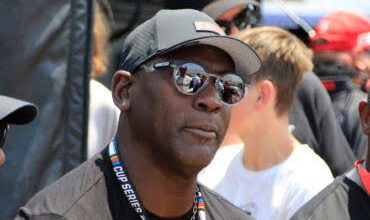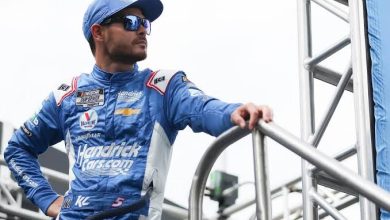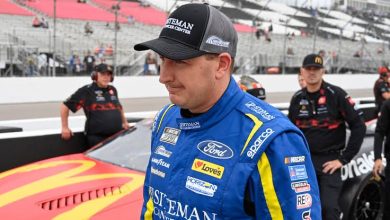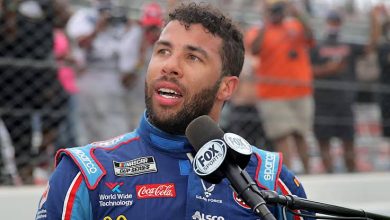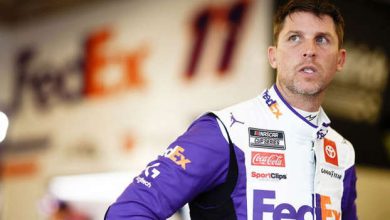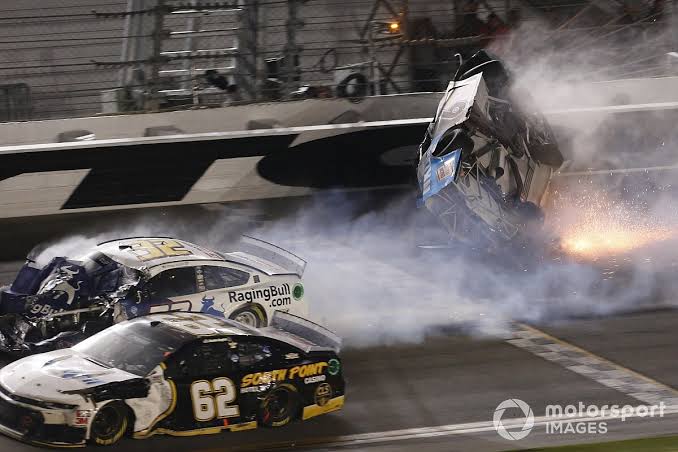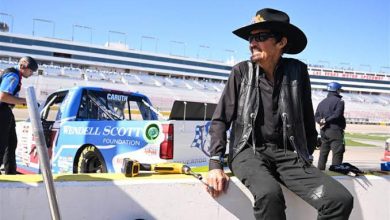NASCAR NEWS: Michael Jordan Announces departing from NASCAR and Reason Why…….
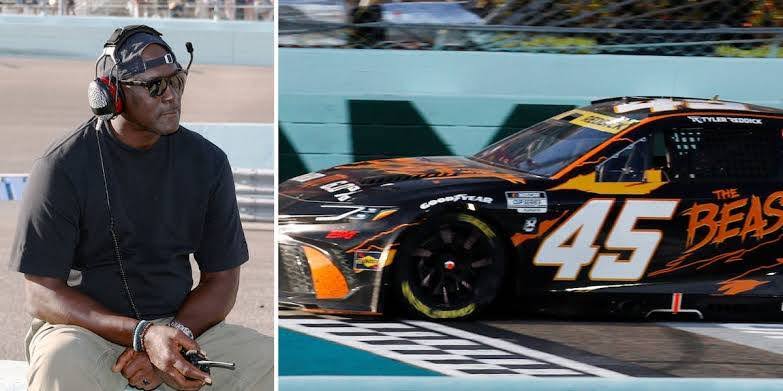
NASCAR NEWS: Michael Jordan Announces departing from NASCAR and Reason Why…….
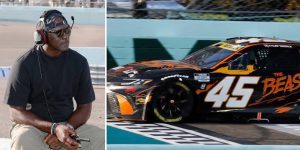
It’s Wednesday afternoon and Labonte is en route to his hometown of Corpus Christi, Texas, capping a busy week of travel.
Still, he graciously fields a phone call, already knowing he’ll be asked the same questions he answered on that fateful, Tennessee night in 1999 and again every so often since Earnhardt’s second Bristol bump-and-run left his car crippled against the inside wall with the seven-time series champion cruising to victory.
On Saturday, the NASCAR Cup Series returns for the Bristol Night Race, 25 years after the moment and scene was etched into the 0.533 miles of high-banked concrete that is at the heart of NASCAR’s one, true stadium venue. And it’s also one that is preserved for eternity as much by Earnhardt’s postrace comments as the crash itself.
“Didn’t mean to really turn him around, meant to rattle his cage a little,” Earnhardt sheepishly grinned into the camera and into living rooms across the country.
Labonte was not grinning.
“It didn’t surprise me,” Labonte says. “It was like, ‘Yeah, OK, that’s Dale.’”
Nicknamed “The Iceman” for his characteristically cool demeanor, Labonte now admits that moniker may not have made it out of Bristol intact that evening had it not been for a mechanical failure.
As he sat in his race car against the fence, he waited, lying in ambush like a wolf in a rooster’s paint scheme – the yellow and red Kellogg’s Corn Flakes variety, to be exact. As Earnhardt came back around after taking the checkers, Labonte timed it out and slammed the car into reverse, intending on a T-bone revenge maneuver befitting a demolition derby and one that almost certainly would’ve sent both pit crews charging into an all-out melee.
Instead, the transmission gave way and Labonte’s car mustered only a couple inches of movement before expiring. Earnhardt cruised past, himself, the thousands in attendance and the millions watching at home none the wiser.
“I thought to myself, ‘You might be going to victory lane in that number three but the number five is going to be buried in the side of it,’” Labonte recalls with a chuckle.
“People always compliment me and say, ‘Terry, you were so cool in that moment.
But if that transmission wouldn’t have blown, it probably would’ve been one heck of a fight.”
There would be no physical altercations that night but the two mutually and silently canceled a planned hunting trip for later that year.
“We just didn’t talk about it,” Labonte says.
And they may never have talked at all. But racing has a way of encouraging the burying of hatchets. The racing gods, with an assist from John Andretti, intervened at Darlington.
“It never fails, whenever you have something like that happen … we go to Darlington the next week and (Labonte and Earnhardt are) parked in the garage beside each other,” Labonte remembers. “Then, we qualify next to each other, one in front of the other.
Then we go to driver introductions, and we walk out there and I’m standing there and I turn around and there’s Dale, standing right behind me.
“John Andretti was standing between us and John looks at me, looks at Dale, and said, ‘Boy, I’m standing in the wrong place.’ We all kind of just laughed and that’s what really kind of broke the ice between us.”
When thinking about Terry Labonte and Bristol Motor Speedway, it’s difficult not to immediately think of one of his last-lap run-ins with Earnhardt.
But those two thrillers merely bookended one of the most successful stretches in the decorated history of Hendrick Motorsports and Labonte’s career.
Labonte arrived at Hendrick Motorsports in 1994, just in time for the team to finish its ascent to the pinnacle of auto racing, a perch it’s held ever since current company vice chairman and NASCAR Hall of Famer Jeff Gordon gave Rick Hendrick his first Cup Series title in 1995. And the parallels between series success and speed at the half-mile Tennessee short track are striking.
Gordon won his first race at Bristol in the spring of 1995 on his way to that breakthrough championship. It was the start of a run of four straight Cup Series crowns for Hendrick Motorsports with Labonte claiming the second of his career in 1996 followed by back-to-back big trophies for Gordon in 1997 and 1998.
They also request that the NASCAR countersuit be dismissed because it “fails at the threshold because it does not allege facts plausibly showing a contract, combination or conspiracy in restraint of trade.
“The counterclaim allegations instead show each racing team individually determining whether or not to agree to NASCAR’s demands through individual negotiations — the opposite of a conspiracy.”
The teams continue: “None of NASCAR’s factual claims fit into the very narrow categories of blatantly anti-competitive agreements that courts summarily condemn as per se unlawful.”
“I decided to actually learn how to play golf about 2 years ago. Of course it’s a little seasonal, mostly for heat in AZ but also work and skiing! I thought I finally had it figured out last fall.
Then I forgot how to hit my driver to start the year off…. Until about 10 days ago.

Kyle Larson’s recent win at Homestead-Miami Speedway gives him 14 victories in the current NASCAR Cup composite body car, but he believes he would have more if he still drove the sheet metal version used in the series in 2021.
“I think switching to this car has limited us from winning,” Larson says. “They’re difficult cars to drive. You have to run really hard. That probably benefits a guy like myself.”
Larson cites the ability to adapt to new things as the reason for his and teammate William Byron’s success in the current Cup car.
Byron has won 12 races since the Next Gen or Gen 7 car was introduced in 2022.
“I think that’s an area (adaptability) where the five team really excels, and the 24 (William Byron) as well,” Larson says. “Young, adaptable drivers and teams.”
That adaptability includes aggressive driving on restarts in NASCAR’s Cup and Xfinity series. The composite car bodies now used in both series are more durable than their sheet metal predecessors and can endure more beating and banging without cutting a tire.
“When you look at the Cup Series and the bumpers and how stiff and rigid they are and how well they line up, there’s beating and banging going on, on these restarts to another level,” says Justin Allgaier, NASCAR’s current Xfinity Series champion. “It’s actually pretty impressive that they’re able to not wreck on some of these restarts on the Cup Series side. You know 90% of the passing that you’re going to do is going to come from those first five, 10 laps. I think restarts have become more aggressive and more haywire than they’ve ever been but it’s risk versus reward; way higher reward than risk.”
Allgaier admits he’s had to adapt his driving style during the last five to 10 years due to the way racing has changed.
“I would say as I’ve gotten older, I’ve probably gotten a little more feisty and probably become a little more aggressive,” Allgaier says.
Ryan Preece admits it’s easy to get “tunneled into being aggressive.”
“The style of racing that we’re in now, with the bodies being so durable, guys are more likely to put them, or you or whoever is in front of you in a bad position,” Preece says. “You need to be ready for somebody to wreck at any time on a restart. This style of racing is you get everything you can on a restart and if you don’t, somebody else will, and then you’re just going to be fighting yourself out of a hole.
“These restarts have turned into a brutal blood bath of just putting guys in bad situations.
There’s times when you need to take advantage of it, and then there’s times you need to say, ‘Well, this isn’t going to work out’ and you need to be ready for that.
I’m not saying you need to hold yourself back.
I think in certain situations, if you see something transpiring that’s going to be bad, you need to be ready for it.
It will be a somewhat historical moment as Legge, driving for Live Fast Motorsports, is the first female to drive NASCAR’s current Next Gen car and only the eighth woman to compete in Cup’s modern era.
“Everybody says, ‘What’s it like to be a girl in racing?’” Legge said. “And I don’t know, because I only have my own experience. I don’t know what it’s like to be a boy in racing.
“So I know what my journey has been, and I know that it’s gone for me and it’s gone against me, and I know where the struggles are. And I know mentally what you have to do to overcome those struggles.”
The 44-year-old Legge has an extensive racing resume that includes 47 starts in top open-wheel cars and nearly 100 starts (including four wins) in top road-racing series.
She has competed in everything from electric cars in Formula E to midget cars at the Chili Bowl.
Certainly, the two had great race cars just about everywhere.
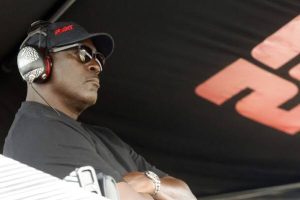
But maybe nowhere more so than Bristol. In that four-year window Gordon and Labonte combined for five wins, 11 top fives and 14 top 10s in 16 combined starts at the World’s Fastest Half Mile, including a pair of 1-2 finishes (spring of 1996 and 1998) with Gordon coming out on top both times.

